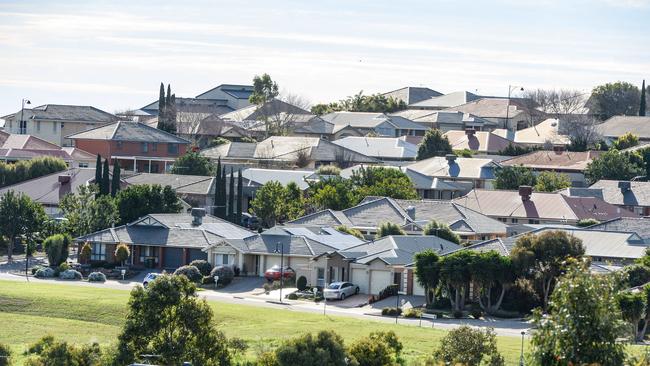House prices set for ‘earlier, sharper’ correction after inflation spike, says Westpac
Rapid interest rate rises by the central bank are set to drive a peak-to-trough fall of 14 per cent, Westpac forecasts.

Rapid interest rate rises by the central bank are set to dampen a rebound in consumer demand as Covid-19 restrictions ease, driving an earlier and sharper correction in house prices, according to Westpac.
“Recent changes to Westpac’s interest rate and inflation forecasts have shifted the outlook for the consumer and dwelling prices in Australia,” Westpac chief economist Bill Evans said.
“Our revised RBA view has the cash rate reaching 1.5 per cent by year end and a peak of 2 per cent by May 2023 … a significantly earlier and more compressed tightening than our forecasts in February which had a first hike in August and a 1.75 per cent peak in March 2024. The first-quarter CPI surge points to a higher near-term outlook for inflation.”
Mr Evans argued that this would “take some of the heat out of the ‘reopening rebound’ in consumer demand in 2022”.
The post-pandemic normalisation in activity and delayed effects of past policy stimulus are still expected to see gains in consumer spending, but with annual growth of 6.2 per cent on-year in real terms rather than Westpac’s previous forecast of 8 per cent. With other adjustments to business investment and housing to reflect a flatter consumer, these changes indicate downward revisions to forecast GDP growth in 2022 from 5.5 per cent to 4.5 per cent, and from 2.7 per cent to 2.5 per cent in 2023, in Westpac’s view.
The accelerated interest rate tightening also brings forward the likely peak in dwelling prices, with Westpac now expecting no further gains in house prices in the near term with a “correction phase” set to begin within months.
House prices are now forecast to fall 2 per cent this year, a further 8 per cent next year and 1 per cent in 2024. A peak-to-trough fall of 14 per cent from May this year to June 2024 would eclipse the 2017-18 fall of 9.6 per cent and the post-Global Financial Crisis fall of 7.4 per cent.
It would be the largest fall based on CoreLogic data back to 1979. But these are not valid comparisons with the corrections during the high inflation periods in the 1970s, 1980s and early 1990s, according to Westpac.
In real, inflation-adjusted terms, the corrections in the early 1980s and early 1990s were deeper.
Available price data for Sydney and Melbourne going back before 1979 suggests corrections in the mid-1970s, early 1960s and early 1950s were deeper in real terms. “While the size of the correction is roughly the same, it starts from a lower peak and comes through more quickly,” Mr Evans said. “With robust inflation near term, dwelling prices will see no net change over the five years to 2024 in real, inflation-adjusted terms.”
On Thursday, CoreLogic research director Tim Lawless said an RBA rate rise “may trigger an earlier than expected decline in prices outside of Sydney and Melbourne”. Despite an increase in rates, Mr Lawless said there was no expectation of a material rise in distressed listings due to the low rate of unemployment.



